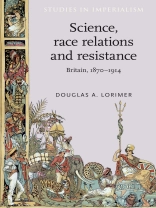By exploring the dimensions of race, race relations and resistance, this book offers a new account of the British Empire’s greatest failure and its most disturbing legacy. Using a wide range of published and archival sources, this study of racial discourse from 1870 to 1914 argues that race, then as now, was a contested territory within the metropolitan culture.
Based on a wide range of published and archival sources, this book uncovers the conflicting opinions that characterised late Victorian and Edwardian discourse on the ‘colour question’. It offers a revisionist account of race in science, and provides original studies of the invention of the language of race relations and of resistance to race-thinking led by radical abolitionists and persons of Asian and African descent living in the United Kingdom.
The book will be of interest to students and scholars of race, colonialism and culture, and to a readership interested in the history of science and race, anti-slavery and humanitarian movements, and the roots of anti-racist resistance.
Cuprins
General Editor’s introduction
1. Introduction
2. Imperial contradictions: assimilation and separate development
Part I: Race
3. Race and science: from institutional foundations to applied anthropology, 1871–1914
4. Race, popular science, and empire
Part II: The language of race relations
5. From colour prejudice to race relations
6. The colour question – ‘The greatest difficulty in the British Empire’, 1900–14
Part III: Resistance
7. Resistance: initiatives and obstacles
8. Conclusion
Index
Despre autor
John Mac Kenzie is Emeritus Professor of Imperial History, Lancaster University and holds Honorary Professorships at Aberdeen, St Andrews and Stirling, as well as an Honorary Fellowship at Edinburgh.












